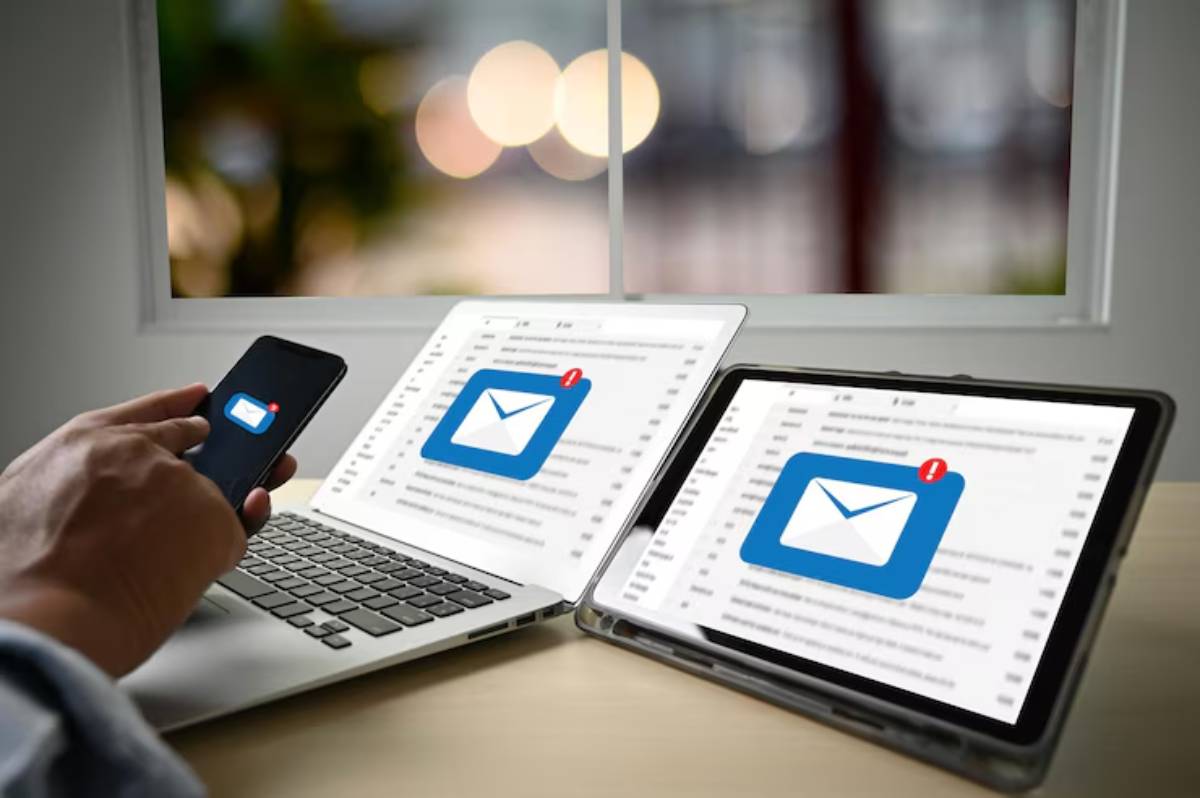The Personal Development Blog

How Digital Overload Affects Your Brain
Picture this: you’re juggling emails while checking your phone, half-watching a video, and switching tabs every few minutes. You feel mentally frazzled, but you’ve barely left your desk. Sound familiar?
You’re not alone.
Digital overload has become a silent strain on modern minds. With the average UK adult spending over 9 hours a day interacting with screens — between work, social media, streaming, and emails — our brains are under more pressure than we realise. The effects aren’t just physical eye strain or a sore neck. This constant mental multitasking can lead to fatigue, mood changes, foggy thinking, and serious focus issues.
In this article, we’ll explore how screen time affects the brain, what tech stress symptoms actually look like, and how to reclaim mental clarity in the digital age, without giving up your devices altogether.
Understanding Digital Overload
Let’s start with the basics. What exactly is “digital overload”?
It refers to the cognitive and emotional strain caused by excessive interaction with digital devices, particularly when multitasking or consuming fragmented information. It’s not just about the hours spent on screens — it’s about how we use them. If you’re unfamiliar with the broader philosophy behind these habits, exploring what is digital minimalism and why it matters provides helpful context for the lifestyle and mindset that can counteract digital fatigue.
Think about:
- Constant app-switching while working
- Endless notifications drawing your attention
- Consuming bite-sized content without breaks
It’s the mental equivalent of trying to sprint through a crowded market with five conversations going on in your ears. Your brain is constantly switching gears, with no time to pause or process. Over time, this hyperstimulation wears you down.
What Happens to Your Brain Under Constant Digital Stress
1. Reduced Attention Span and Focus
Ever noticed how hard it is to read a long article or stay with one task for more than a few minutes? You’re not imagining it.
According to a Microsoft Canada study, the average human attention span has dropped from 12 seconds in 2000 to 8 seconds in 2021, largely attributed to the digital environment. Constant interruptions retrain your brain to seek novelty, making sustained focus feel unnatural.
The result?
- You become more easily distracted
- It’s harder to enter a deep work state
- You struggle to retain information
2. Decision Fatigue
Every app ping, email, or social scroll demands micro-decisions: Should I check that? Reply now or later? Read or ignore?
These tiny choices pile up. The brain, especially the prefrontal cortex (responsible for executive function), gets exhausted. This is called decision fatigue, and it’s why you might find yourself making poorer choices as the day wears on, especially if you’ve been glued to screens since morning.
3. Mental Fog and Memory Strain
Information overload makes it harder for your brain to filter, categorise, and store what matters. You take in so much — news updates, social posts, work messages — that your working memory gets cluttered.
This leads to:
- Trouble recalling details
- Slower processing speed
- A foggy, “clouded” mental state
Your brain’s bandwidth is limited, and digital clutter consumes it quickly.
Real-Life Example: Jason’s Workday Spiral
Jason, a 35-year-old software developer, starts his day by checking Slack, glancing at emails, and scrolling news feeds while making coffee. He tells himself he’s staying “informed,” but by 10 a.m., he’s already switched tasks a dozen times.
By lunchtime, he’s irritable and struggling to concentrate on client work. His mind feels “foggy,” and he’s rereading the same paragraph multiple times.
What Jason didn’t realise was that his digital habits were eroding his cognitive clarity. His brain wasn’t lazy — it was overstimulated and exhausted.
How Screen Time Disrupts Mental Clarity
1. Blue Light and Sleep Disruption
Blue light from screens suppresses melatonin, the hormone that regulates sleep. Exposure at night can shift your circadian rhythm, leading to poorer sleep quality, and the next day, you’re more tired, more anxious, and less mentally sharp.
This sets off a cycle of:
- Poor sleep → lower focus → more screen time for escape → even worse sleep
Over time, it affects not just your rest but your long-term cognitive health.
2. Constant Notifications Trigger Fight-or-Flight Responses
Each ping or buzz might seem harmless, but it triggers a mild stress response. Your sympathetic nervous system prepares for action — heart rate increases, cortisol spikes, and your brain shifts to reaction mode.
That means:

- Deep thinking
- Heightened anxiety or restlessness
- More impulsive reactions
Think about how jittery you feel after a morning of non-stop alerts. That’s not just a distraction — it’s physiological stress.
3. Overconsumption Weakens Reflection
One of the overlooked effects of screen time is how it steals the still moments — those in-between pauses where your brain processes emotions, insights, or decisions.
When every idle moment becomes scroll time, your mind loses space for reflection. This stunts creativity, problem-solving, and even emotional resilience.
Are You Experiencing Tech Stress Symptoms?
You don’t need a formal diagnosis to spot digital fatigue. The signs can be subtle at first, but add up over time.
Common tech stress symptoms:

- Compulsive checking of devices
- Struggling to concentrate on tasks
- Feeling mentally foggy or “slow”
- Trouble falling asleep or waking up groggy
- Short temper or irritability after screen use
- Physical tension, especially in the neck and eyes
If two or more of these sound familiar, it may be time to rethink your digital routine.
The Link Between Digital Habits and Mental Health
Several studies have drawn connections between excessive screen time and higher rates of anxiety, depression, and stress.
For example, research published in BMC Public Health found that young adults who spent over 6 hours a day on screens had significantly higher symptoms of psychological distress.
It’s not just the volume of screen time, but the nature of it. Passive consumption (like scrolling or binge-watching) is far more detrimental than active, purposeful engagement (like learning or video calling loved ones).
Digital minimalism can help shift your habits in favour of intentional, energising tech use, not draining distraction.
For strategies on how to do this gradually, understanding the core principles of digital minimalism is a good place to start.
Building Mental Clarity in a Digital World
You don’t have to give up screens altogether. The goal is conscious consumption — using tech in ways that support, not sabotage, your brain.
Here’s what that might look like:

- Batching tasks: Check emails and messages at set times to avoid constant mental switching.
- Screen-free zones: Keep phones out of the bedroom or dining area.
- Tech-free mornings: Start the day with reading, walking, or journaling instead of checking your phone.
- Intentional breaks: Step away every 90 minutes to rest your eyes and reset your mind.
Even small shifts — like silencing notifications or unfollowing cluttered content feeds — can restore mental breathing room.
Personal Story: Amira’s 30-Minute Rule
Amira, a 28-year-old marketing manager, found herself constantly distracted at work. She installed a time tracker and discovered she was checking her phone over 100 times a day.
Inspired by digital clarity techniques, she introduced the 30-minute rule: no screen checks within 30 minutes of waking or going to sleep.
Within a week, she noticed:
- Sharper focus in morning meetings
- Easier bedtime wind-down
- Less compulsive scrolling
It wasn’t a dramatic overhaul, but it helped her feel in control of her digital habits, not ruled by them.
Final Thoughts: Your Brain Deserves Better
Digital tools have transformed our lives, but they weren’t designed with our minds in mind. The constant buzz, brightness, and stimulation may feel normal, but that doesn’t mean it’s healthy.
When you learn to recognise how digital overload affects your brain — from decision fatigue to memory strain — you can take steps to protect your most valuable asset: your attention.
And in doing so, you’ll make room for more meaningful work, richer relationships, better sleep, and a calmer mind.
So what’s one screen habit you could shift today? Your brain is already thanking you for asking.









